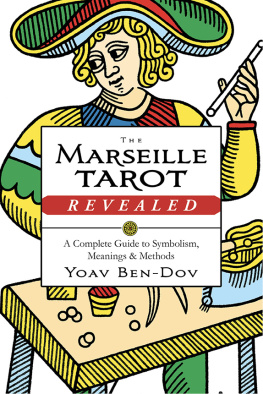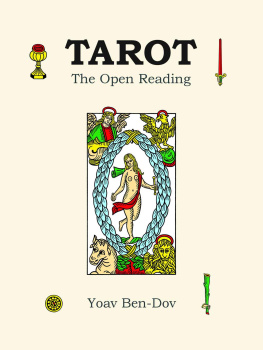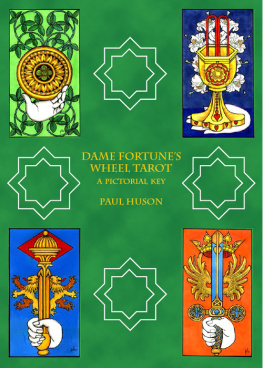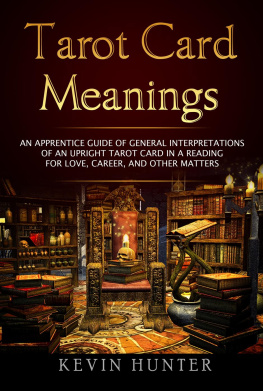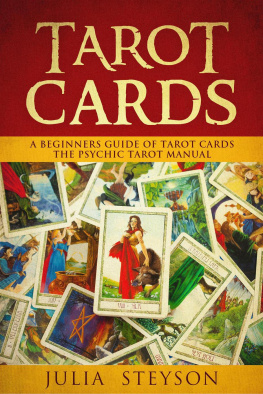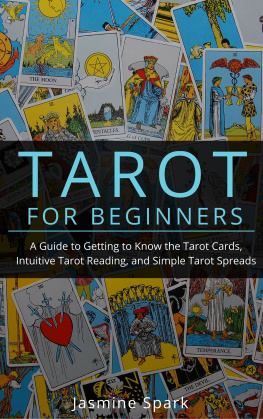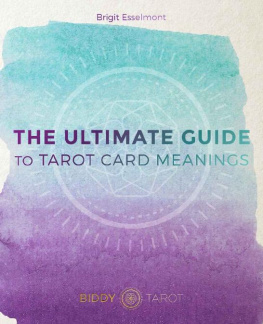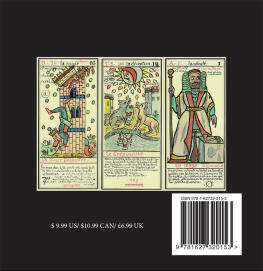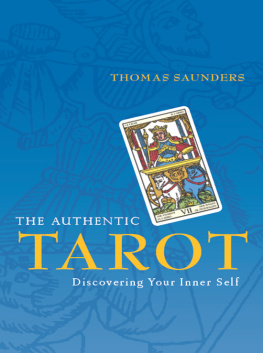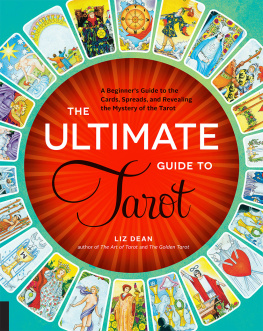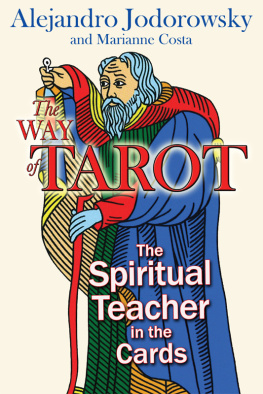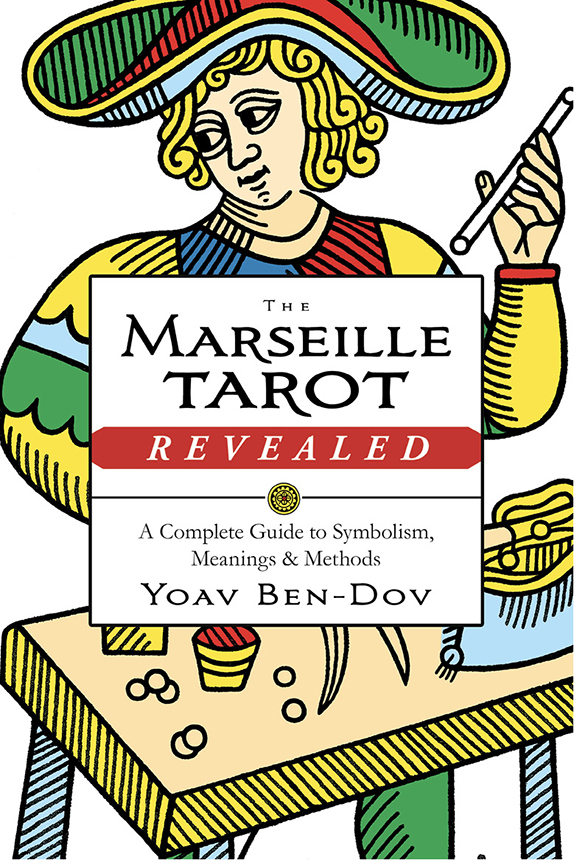Yoav Ben-Dov studied physics and philosophy of science at Tel Aviv University and earned his doctorate at Paris-13 University on the philosophy of quantum mechanics. He was involved with tarot for more than thirty years: reading for people, teaching, writing, and experimenting. He studied tarot and psychomagic with Alexandro Jodorowsky and wrote the first tarot book to be published in Hebrew. Additionally, he was the publisher of the CBD Tarot de Marseille. Yoav lived in Tel Aviv, Israel, and died in late 2016. His work can be found online at www.CBDTarot.com

Llewellyn Publications
Woodbury, Minnesota
Copyright Information
The Marseille Tarot Revealed: A Complete Guide to Symbolism, Meanings, and Methods 2017 by Yoav Ben-Dov.
All rights reserved. No part of this book may be used or reproduced in any matter whatsoever, including Internet usage, without written permission from Llewellyn Publications, except in the form of brief quotations embodied in critical articles and reviews.
As the purchaser of this e-book, you are granted the non-exclusive, non-transferable right to access and read the text of this e-book on screen. The text may not be otherwise reproduced, transmitted, downloaded, or recorded on any other storage device in any form or by any means.
Any unauthorized usage of the text without express written permission of the publisher is a violation of the authors copyright and is illegal and punishable by law.
First e-book edition 2017
E-book ISBN: 9780738752853
Book design by Rebecca Zins
Cover design by Ellen Lawson
Llewellyn Publications is an imprint of Llewellyn Worldwide Ltd.
Cards 2011, 2015 by Yoav Ben-Dov
All the card illustrations in color, additional materials to read and download, updates, and instructions for ordering a deck of CBD Tarot de Marseille are available at www.CBDTarot.com
Library of Congress Cataloging-in-Publication Data
Names: Ben-Dov, Yoav, author.
Title: The Marseille tarot revealed : a complete guide to symbolism, meanings
& methods / Yoav Ben-Dov.
Description: FIRST EDITION. | Woodbury : Llewellyn Worldwide, Ltd, 2017. |
Identifiers: LCCN 2017010657 (print) | LCCN 2016059617 (ebook) | ISBN
9780738752280 | ISBN 9780738752853 (ebook)
Subjects: LCSH: Tarot. | Marseille (France)Miscellanea.
Classification: LCC BF1879.T2 B395 2017 (ebook) | LCC BF1879.T2 (print) | DDC
133.3/2424dc23
LC record available at https://lccn.loc.gov/2017010657
Llewellyn Publications does not participate in, endorse, or have any authority or responsibility concerning private business arrangements between our authors and the public.
Any Internet references contained in this work are current at publication time, but the publisher cannot guarantee that a specific reference will continue or be maintained. Please refer to the publishers website for links to current author websites.
Llewellyn Publications
Llewellyn Worldwide Ltd.
2143 Wooddale Drive
Woodbury, MN 55125
www.llewellyn.com
Manufactured in the United States of America
Content
: The Tarot Deck
: The Reading Session
: Reading the Cards
: The Symbolic Language
: The Major Suit
: The Major Cards
: The Minor Suits
: The Ace Cards
: The Court Cards
: The Number Cards
: Additional Spreads
: Quick Interpretations
Preface
There is magic in the tarot.
Originally popularized as a humble means for playing games of chance, for several centuries this mysterious set of seventy-eight cards has captured the imagination of countless people. Some have used the cards as an instrument for divination and fortunetelling. Others have seen the tarot as a secret repository of ancient and powerful knowledge. Today many people use the tarot cards as a tool for consultation, guidance, and decision making. There are also those who employ them as a visual aid for guided imagination and meditation, or as magical amulets. And in the course of these centuries, countless human lives have been touched, and sometimes transformed, by the reading of tarot cards.
I have been with the tarot for thirty-four years: reading for people, teaching, writing, and experimenting. I am still learning the tarot. The subtle intricacies of the illustration details continue to present me with surprises. New and unexpected meanings never cease to emerge. And I am still amazed whenever people open up and share their most intimate feelings in a reading session, when just the right card appears for someone in need, or when an unexplained but meaningful coincidence (or synchronicity event) happens in the presence of the tarot cards.
And yet if asked what the tarot is, I would say that, first of all, it is a work of art not like a painted picture, framed and hung as a finished product that cannot be changed. Rather, it is a capricious set of images to be handled and played with, evolving over many generations through the collective efforts of deck creators and visionaries. It is a wonderful work of art, rich and flexible enough to span the entire range of human experience, from our innermost feelings to the external events of everyday life. And it is through this art, in the details of the card illustrations, that the magic of the tarot is revealed.
The object of this book is threefold. First, it is a general introduction to the tarot cards and the reading process. As such, it can be relevant whether you want to read the cards yourself or if you are interested in tarot reading as a psychological device, as a cultural phenomenon, or as a way to find meanings in a work of art. Second, it is a guide for a method of tarot reading that I call the open reading, based on looking at the card illustrations rather than learning fixed interpretations by heart. The open reading can be applied to different kinds of tarot cards, although it works with some more effectively than with others. Third, it is a handbook for reading the Tarot de Marseille, which is the classical version of the traditional tarot. In particular, it uses the CBD Tarot de Marseille, an edition of the cards that I restored from the most influential historical deck originally published by Nicolas Conver in 1760 .
Welcome.
Chapter 1
The Tarot Deck
A deck of tarot cards contains seventy-eight cards. These can be divided into two parts. The first part is called the major suit. It consists of twenty-two cards with elaborate illustrations, numbered consecutively and having a specific name for each one. The majors show images of people and animals along with many objects and symbols. Some of these are taken from social life. Others represent mythological, religious, or philosophical themes.
The remaining fifty-six cards are further divided into four suits. These are called the minor suits and have a simpler design than the majors. The four suits are named after four symbolic objects: coins, wands, cups, and swords. Each of the minor suits consists of fourteen cards of three types: one ace card, nine numbered cards (from two to ten), and four court cards identified by their rank: page, knight, queen, and king. The minor suits structure is thus quite similar to normal playing cards, which also have four suits. The main difference is that playing cards have only three court cards: jack, queen, and king.
Tarot literature sometimes uses different names for the deck parts. The major and the minor suits are sometimes called major and minor arcana (from Latin arcanum , mystery). The major suit cards are also called trumps (triumphs), while the aces and numbers are sometimes referred to as pip cards.

